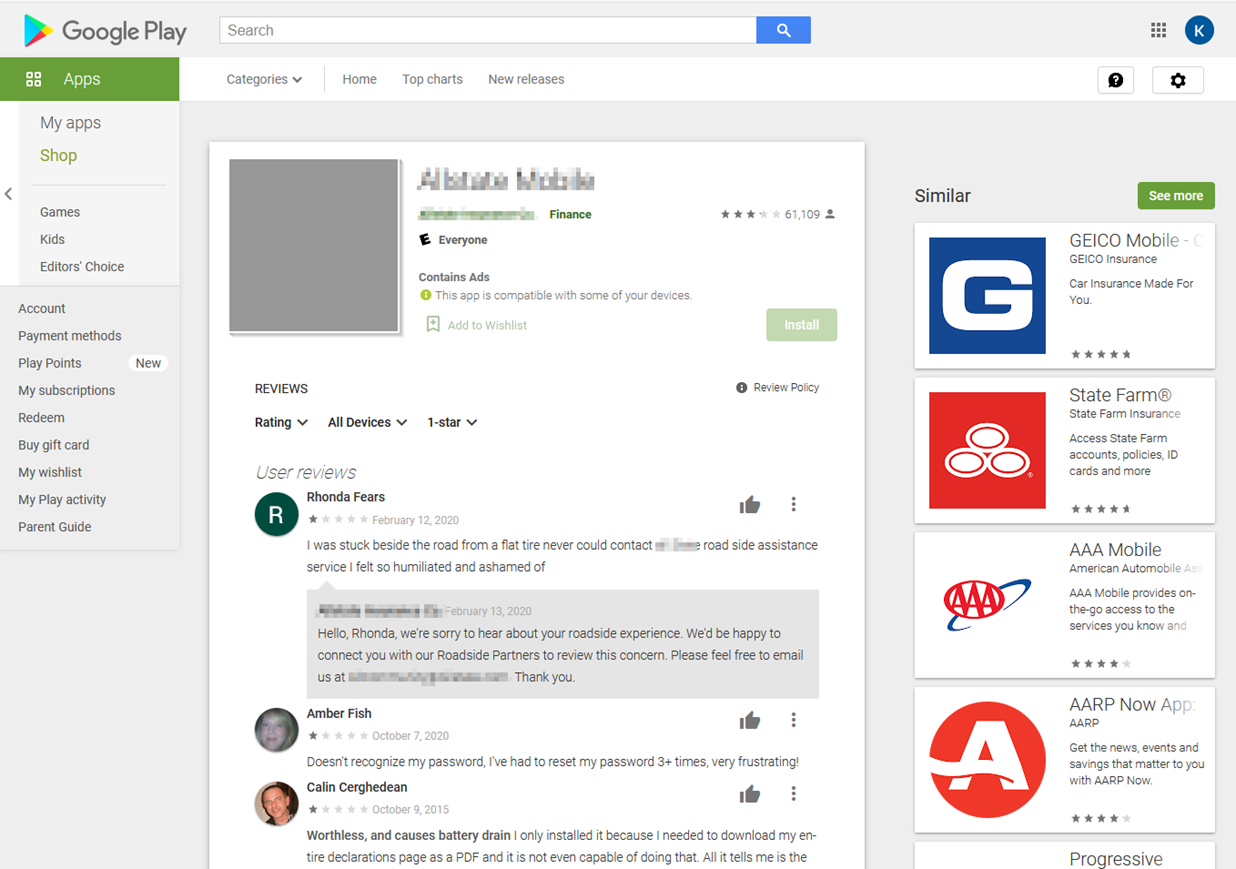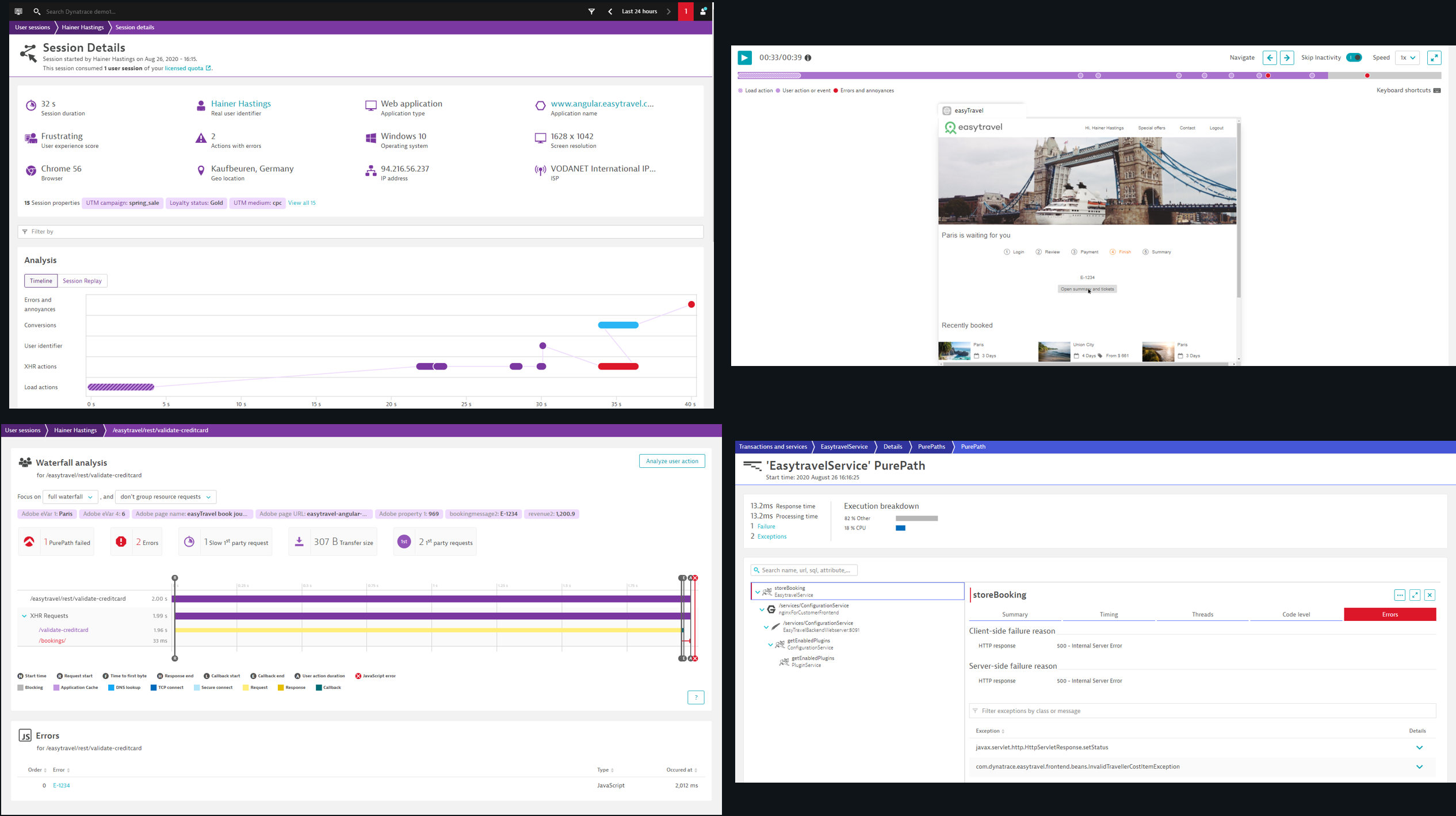The experiences users have with your digital touchpoints create a lasting impression. In an increasingly online world, these digital experiences are often the most important interaction users have with your brand.
Organizations are constantly being measured against the best available digital experiences — coming from Google, Amazon, Facebook, and other industry leaders. These heightened expectations are applied across every industry, whether in government, banking, insurance, e-commerce, travel, etc. Even if an app has minimal competition, users expect digital experiences to be seamless and responsive. But what is digital experience exactly, and what can you do to ensure you’re delivering the best experiences possible?
What is digital experience?
A digital experience (DX) is a user’s interaction with a digital touchpoint — whether purchasing an item online, receiving updates from a mobile app, or power-using a business platform. A digital touchpoint may be a mobile application, a website, a smart TV, ATM, airport check-in kiosk, point-of-sale terminal, etc.
Some of the factors that affect user experience include:
- Availability: Is the touchpoint available when the user wants to use it?
- Performance: Is the interaction as seamless and fast as possible, or does the user always have to wait to achieve their goal?
- Errors: Are there any errors or broken components hindering the user from interacting with the touchpoint?
- User flow: Can the user actually achieve what they want to do? Was their operation successful?
- Usability: Are the needed functions easy to find? Is the functionality frictionless to use?
Monitoring digital experiences has become increasingly critical for organizations to maintain their competitive edge. Just as a shop owner wants to know if their customers are having difficulty locating a product or accessing the store, owners of digital services want to know users’ pain points as they navigate their offerings.
One advantage of digital experience over physical interaction is the tooling and technologies that are available to monitor and potentially improve the experience for your users.
Why is delivering zero-friction digital experiences so critical?
Poor digital experiences often result in lost business — switching to a competitor’s offering is just a tap or mouse click away. If that competitor delivers a better experience, you’ve lost not only a transaction but the future business of a once-loyal customer. You may think you can rely on customer loyalty, but according to McKinsey, since the start of the COVID-19 pandemic, 75% of U.S. consumers have tried new brands or outlets, diminishing the loyalty factor. Working on a customer win-back strategy is cost-intensive and not always fruitful, which makes having an excellent DX more crucial than ever.
Another risk of a bad user experience is the company’s brand reputation. One could argue that having a mobile app in the app store with a 1-star rating is worse than having no app at all. Some startups undergo expensive rebrandings just to get rid of the negative image created by a single bad mobile app deployment to the app store.
What ruins a digital experience?
Here are a few reasons user experiences can fail.
1. Digital touchpoint outage
This is the hard fail. There is nothing worse than your well-designed digital touchpoint simply falling offline. Identifying an outage was easier in the past when all the services were delivered directly from your hosted data centers. But cloud transformation makes detecting the epicenter of a failure much more challenging, as outages can be caused by your cloud provider, a third party helping deliver personalized experiences, your content delivery network (CDN), and many other services you may be leveraging.
Aside from lost revenue, users and customers may be quick to call out your brand on social media when your offering’s availability struggles, as Instagram experienced not long ago.

2. Broken functionality on a critical user path
Another obvious example is an issue in the checkout funnel of an e-commerce store. For a twist on that scenario, consider this example from the car insurance industry.
Today, every car insurance company provides a mobile app. The app should help users in very rare situations, such as a car crash or if they need roadside assistance. In these critical moments, everything must work — no excuses. If the app lets the user down on the worst day of their year, they will remember. When the “contact agent” functionality causes the app to white-screen, the user will be unhappy, and they might confront the app’s owner with a complaint on the Google Play Store where they’ll find a list of competing mobile apps that may be outperforming their current choice. The window of opportunity to save this customer is now very small and closing fast.

3. Soft fails and speedbumps
Besides the outright failures, there is a long list of soft impacts that injure user experience. Some include:
-
- Web performance not meeting the user’s expected experience
- Overcomplicated user flows
- Annoying “pop-up” messages distracting the user
- Web screens not displaying on a mobile device correctly
- Touchscreen UI controls too small to tap
<li”>Menu entries not reachable because they disappear on hover
- Overlapping text on browser window resizing
- No error feedback in form inputs
- No constraints in form input fields
- Mixing horizontal and vertical scrolling on mobile
Because of everything that can go wrong, it’s imperative for organizations to constantly track metrics that indicate user satisfaction and have a robust complaint resolution model in place.
Best practices for delivering excellent digital experiences
- Break down silos. Great digital experiences require the right culture and mindset. No technology, tool, or practice can accomplish this for you. But thinking about delivering experiences for people rather than thinking in silos can give your organization a chance to bring frictionless experiences to the world. What does that mean? Should I not follow a particular practice? Should I not use certain tools?
- Collaborate and keep an open mind. Practices and tools are required, but to create great user experiences, you need to be open-minded. For example, I was on a call with a company talking about BizDevOps collaboration. Their collaboration efforts were stuck because the marketing, business, and IT teams could not overcome the ownership question for a supporting tool. It shouldn’t matter who owns the tool as long as it fosters collaboration.
- Decide what to measure. Once you’ve embraced a user journey mindset, start thinking about what matters to you and your users as you define your core KPIs. Or, as site reliability engineers like to say, what are your service-level objectives (SLOs)?
- Decide how to measure it. It’s important that you agree on what to measure and find one solution for how you measure it — not have each team measuring the same thing with different tools. Without agreeing on the single source of truth, you’ll end up in meetings arguing about metrics instead of helping your users.
Which KPIs do you want to track?
A full list of what to track for your applications and services will vary, but here are some basic KPIs to get you thinking in the right direction.
- Number of conversions or number of “dollar making” interactions
- User experience score
- Percentage of crash-free users (mobile specifically)
- Google Core Web Vitals: Largest Contentful Paint, First Input Delay, and Cumulative Layout Shift (specifically for web)
- Availability and Response Time of API (specifically for API driven industries)
- Net promoter score
- Number of failing form field validations
- Number of displayed error messages
Once you have KPIs you want to track and the metrics to quantify them, you’re ready for digital experience monitoring.
What is digital experience monitoring?
Digital experience monitoring (DEM) is the practice of using tools and technologies to gather and evaluate metrics from sources along the customer value chain to determine the quality of a user’s interaction with a digital touchpoint. DEM provides real-time metrics, reports, and alerts on the KPIs that are important to you.
Keeping track of DX is a crucial part of a complete performance monitoring practice. DEM helps teams understand the context of what’s going on amid the interactions happening across the multitude of apps, services, and infrastructure of your multicloud environment. When integrated with a holistic approach to systems monitoring, DEM, long with real-user monitoring (RUM) and synthetic monitoring, provides important clues to how transactions and issues can impact the business.
Benefits of digital experience monitoring
DEM has two main goals:
- Detect technical failures. Monitoring helps organizations detect and quickly respond to technical failures that can ruin the user experience. For example, alerting when page load time slows down, or detecting sudden drops in conversion rates due to a soft fail. Having this real-time outlook enables your business to operate with efficiency by proactively identifying and altering for both hard and soft failures.
- Prioritize issues that matter most to the business. Digital experience monitoring helps you prioritize the most important issues based on how they affect users. For example, among a series of alerts lies the root cause of a sudden dip in conversions. It can indicate an issue that affects all users or certain users and user groups, such as paying customers. With the right DEM solution in place, you can automatically pinpoint the exact underlying cause, such as a faulty API, and prioritize it over other less consequential alerts.
Challenges of digital experience monitoring
While an organization’s customer base, brand goals, and current IT infrastructure present certain monitoring challenges — for example, coordinating legacy systems with cloud-based solutions — organizations typically face three common challenges in digital experience monitoring:
- Complexity. Behind the single touch point the user is interacting with, there can be a microservices architecture running on an multicloud environment. Those technologies/environments make it possible to deliver more features faster and more efficiently. But they also introduce exponential complexity. Between layers of services on multicloud platforms, Kubernetes architecture, and open-source technologies, the number of things that can—and do—go wrong with a user experience has exploded.
- Context. Understanding the context users are in is another crucial aspect you need to be aware of. Things like location, devices, carrier and other facets can make a huge difference. Consider the following two situations: A user interacting with your digital asset while she is on the train to work with her mobile phone vs the user sitting at home in front of his smart TV trying to achieve the same goal. The more individual you can make the experience for them in the different situations the more aware you have to be of the context each user is in when monitoring the quality of their digital experience.
- Causation. Determining the root cause of a poor user experience is the ultimate goal, but not always so easy to do. Especially in distributed multicloud environments, teams lack adequate visibility into the application delivery chain to identify what’s wrong. They also often receive multiple alerts for different, seemingly unrelated symptoms of a single root-cause problem. Relying on time-based correlation to link these alerts is not precise, and requires time-consuming investigation.
To deal with these challenges, it helps for teams to take a platform approach to digital experience monitoring, one that provides a unified view into the user journey. By integrating DX data from multiple channels into a single monitoring and analysis platform, organizations can achieve a holistic view of the customer experience.
User experience meets business impact
Quickly see if applications are performing as customers expect, get AI-powered answers to proactively address issues before end users are impacted, and drive better business outcomes.
Digital experience monitoring with Dynatrace
With increasing competition among service providers to win user loyalty and meet users’ constantly increasing expectations, delivering excellent digital experiences is more important than ever. The key to delivering excellent digital experiences is the ability to see and understand the entire user journey.
Dynatrace offers comprehensive digital experience monitoring and business analytics that drive to the heart of the user journey. The Dynatrace DEM solution includes Real User Monitoring, Session Replay, and Synthetic Monitoring, that enables you to capture the right metrics so you can tailor and optimize user experiences. Together with the Business Analytics solution you can start optimizing your digital channel for better business outcomes and at the same time improve collaboration between IT and LoB stakeholders.
For example, Dynatrace tracks many common KPIs by default, and supports the addition of custom KPIs for metrics more specific to your business needs.
The four screenshots below show a single user session through the lens of four different stakeholders. The insights cover which marketing campaign brought the user to the touchpoint (upper left), the session replay of an error (upper right), the waterfall analysis of a poorly performing interaction (lower left), and the stack trace of the error message detailing the technical issue the customer was facing (lower right).

Dynatrace rolls up all this digital experience data into meaningful metrics for IT teams and business stakeholders, giving them a real-time overview of how digital experience impacts business success. With this insight, teams can instantly see the root cause of any issues, or trigger automatic responses to resolve issues before they impact the user experience.
What makes the Dynatrace approach so compelling for companies on digital transformation journeys is the breadth of solutions integrated into an open platform. With AIOps at the core of the Dynatrace platform, you can capitalize on the end-to-end visibility over your entire software stack to harness data from every digital touchpoint into actionable insight.
To see it all in action, join us for the power demo, Perfecting user experience.




Looking for answers?
Start a new discussion or ask for help in our Q&A forum.
Go to forum